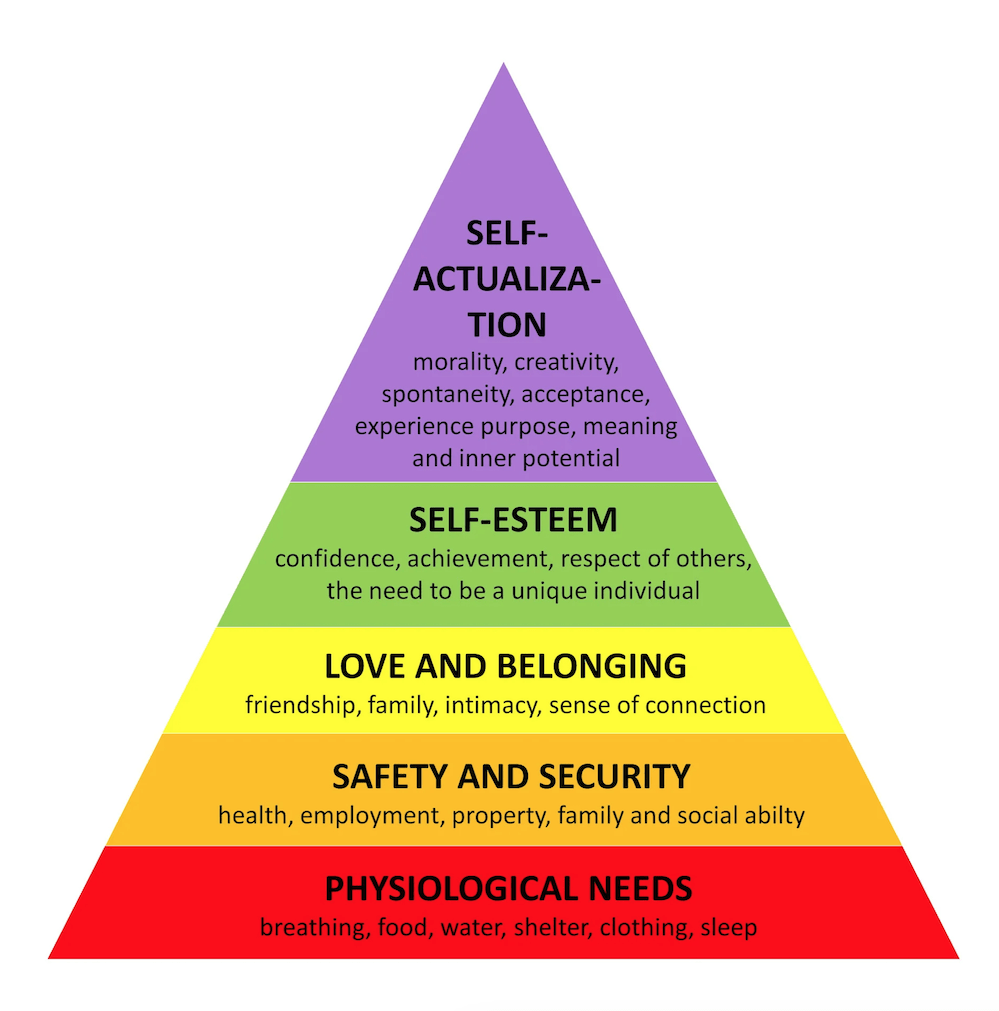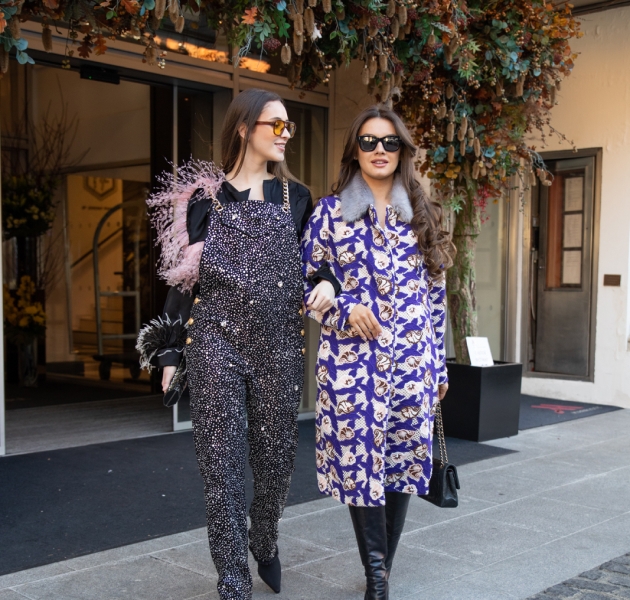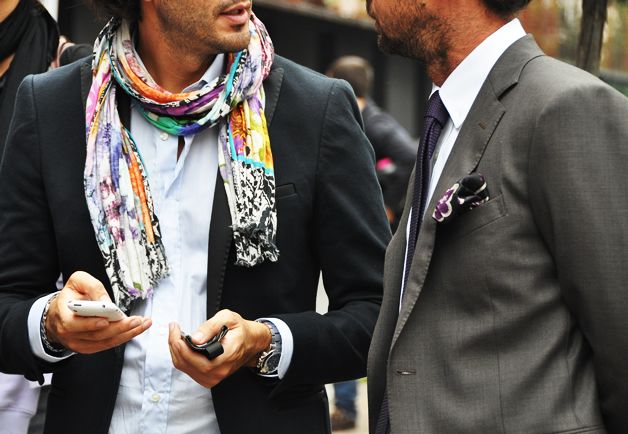Consumer behaviour is reflected in Maslow’s hierarchy of needs, a motivational theory in psychology comprising a five-tier model of human needs, often depicted as hierarchical levels within a pyramid.
From the bottom of the hierarchy upwards, the needs are physiological (food and clothing), safety (job security), love and belonging needs (friendship), esteem, and self-actualisation.

Needs lower down in the hierarchy must be satisfied before individuals can attend to higher needs.

Consumer behaviour – Growth needs
Growth needs are more psychological needs and are associated with the realisation of an individual’s full potential and the need to ‘self-actualise’. These needs are achieved more through intellectual and creative behaviour. Growth needs do not stem from a lack of something but rather from a desire to grow as a person. Once these growth needs have been reasonably satisfied, one may be able to reach the highest level, called self-actualisation. Growth needs are achieved more through intellectual and creative behaviour.
Every person is capable and has the desire to move up the hierarchy toward a level of self-actualisation. Unfortunately, progress is often disrupted by a failure to meet lower-level needs. Life experiences, including divorce and the loss of a job, may cause an individual to fluctuate between levels of the hierarchy. Therefore, not everyone will move through the hierarchy in a uni-directional manner but may move back and forth between the different types of needs.
The Original Hierarchy Of Needs Five-Stage Model
According to Maslow (1943, 1954), human needs were arranged in the form of a hierarchy, with physiological (survival) needs at the bottom, and the more creative and intellectually oriented ‘self-actualisation’ needs at the top.
Maslow argued that survival needs must be satisfied before the individual can satisfy the higher needs. The higher up the hierarchy, the more difficult it is to satisfy the needs associated with that stage, because of the interpersonal and environmental barriers that inevitably frustrate us.
Higher needs become increasingly psychological and long-term rather than physiological and short-term, as in the lower survival-related needs.
1. Physiological needs these are biological requirements for human survival, e.g., air, food, drink, shelter, clothing, warmth, sex, and sleep.
Our most basic need is for physical survival, and this will be the first thing that motivates our behaviour. Once that level is fulfilled, the next level up is what motivates us, and so on. If these needs are not satisfied, the human body cannot function optimally. Maslow considered physiological needs the most important as all the other needs become secondary until these needs are met.
Once an individual’s physiological needs are satisfied, the need for security and safety becomes salient.
2. Safety needs – people want to experience order, predictability, and control in their lives.
Safety needs can be fulfilled by the family and society (e.g., police, schools, business, and medical care).
For example, emotional security, financial security (e.g., employment, social welfare), law and order, freedom from fear, social stability, property, health and well-being (e.g., safety against accidents and injury). After physiological and safety needs have been fulfilled, the third level of human needs is social and involves feelings of belongingness.
3. Love and belongingness needs – belongingness refers to a human emotional need for interpersonal relationships, affiliating, connectedness, and being part of a group.
Examples of belongingness needs include friendship, intimacy, trust, acceptance, receiving and giving affection, and love. This need is especially strong in childhood and can override the need for safety as witnessed in children who cling to abusive parents.
4. Esteem needs are the fourth level in Maslow’s hierarchy and include self-worth, accomplishment, and respect.
Maslow classified esteem needs into two categories: (i) esteem for oneself (dignity, achievement, mastery, independence) and (ii) the desire for reputation or respect from others (e.g., status, prestige). Esteem presents the typical human desire to be accepted and valued by others. People often engage in a profession or hobby to gain recognition. These activities give the person a sense of contribution or value.
Low self-esteem or an inferiority complex may result from imbalances during this level in the hierarchy. Maslow indicated that the need for respect or reputation is most important for children and adolescents and precedes real self-esteem or dignity.
5. Self-actualisation needs are the highest level in Maslow’s hierarchy and refer to the realisation of a person’s potential, self-fulfilment, seeking personal growth, and peak experiences.
This level of need refers to what a person’s full potential is and the realisation of that potential.
Maslow (1943, 1987, p. 64) describes this level as the desire to accomplish everything that one can, and “to become everything one is capable of becoming”. Individuals may perceive or focus on this need very specifically. For example, one individual may have a strong desire to become an ideal parent.
In another, the desire may be expressed athletically. For others, it may be expressed in paintings, pictures, or inventions. Although Maslow did not believe that many of us could achieve true self-actualisation, he did believe that all of us experience transitory moments (known as ‘peak experiences’) of self-actualisation.
Such moments, associated with personally significant events such as childbirth, sporting achievement and examination success), are difficult to achieve and maintain consistently. Maslow posited that human needs are arranged in a hierarchy:
“It is quite true that man lives by bread alone — when there is no bread. But what happens to man’s desires when there is plenty of bread and when his belly is chronically filled?
At once other (and “higher”) needs to emerge and these, rather than physiological hunger, dominate the organism. And when these in turn are satisfied, again new (and still “higher”) needs emerge and so on. This is what we mean by saying that the basic human needs are organised into a hierarchy of relative prepotency” (Maslow, 1943)
Maslow continued to refine his theory based on the concept of a hierarchy of needs over several decades (Maslow, 1943, 1962, 1987).
Regarding the structure of his hierarchy, Maslow (1987) proposed that the order in the hierarchy “is not nearly as rigid” as he may have implied in his earlier description.
Maslow noted that the order of needs might be flexible based on external circumstances or individual differences. For example, he notes that for some individuals, the need for self-esteem is more important than the need for love. For others, the need for creative fulfilment may supersede even the most basic needs.
Maslow (1987) also pointed out that most behaviour is multi-motivated and noted that “any behaviour tends to be determined by several or all of the basic needs simultaneously rather than by only one of them”
So how does reflect on consumer purchasing decisions?
For brands and marketers to understand how to use the pyramid they must understand how their product serves the consumer at each stage. Marketers will do well to understand what needs are important to each customer or group of customers. This is essential when persona building.
A purchase a car someone with a family may value safety and security over needing the respect of others (self-esteem). This may manifest itself in fashion and apparel purchases changes in brand loyalty, and willingness to be open to change as criteria for stages are reached, from either direction.
A purchase of a non-essential service such as fine dining may be better marketed to consumers in the self-esteem stages.
Once we are satisfied with the first two stages, the desire to find true happiness occurs and we move quickly to the other stages. The reflects in willingness to embrace quality products, and even introduce luxury selections, being far more reflected of actual patterns, than those curly assuming money to spend reflects these stages, i.e. the old socio-economic groups.
Many brands that serve best at these later stages will benefit from ensuring their messaging speaks to these needs, but in a way that is empathetic to the current situation. We have already seen this occur as brands shift and pivot to meet these adapted needs amid the coronavirus.
Self-Esteem:- With more time on our hands our need for external validation is even more important. Some luxury brands may feel it isn’t a time to communicate – but now is the time to engage more. Many luxury brands, instead of pushing sales are using digital platforms to engage with consumers. It is well documented that many luxury brands may lose sales during a crisis, they bounce back very quickly afterwards.
Salvatore Ferragamo is using their heritage and rich storytelling to engage on social platforms. They have also launched the Trivia digital project where they ask users to test their knowledge of the brand’s history and products.
Self-actualisation:- In times of a crisis many consumers who get to this stage are spurred to take action. This is where consumers are looking to give back and improve their world. This is not just about donating money – this is about doing good. And many brands have been seen to communicate how their charitable efforts are helping in a time of need.
Hyper-personalisation of course, is the most ideal solution to be able to both immediately identify with each consumer’s change of situation on the hierarchy pyramid, and be able to maximise the return from it too. An AI machine learning predictive analytics solution sees the change the second it occurs, and running autonomously ensures the maximum return is made as it does.





